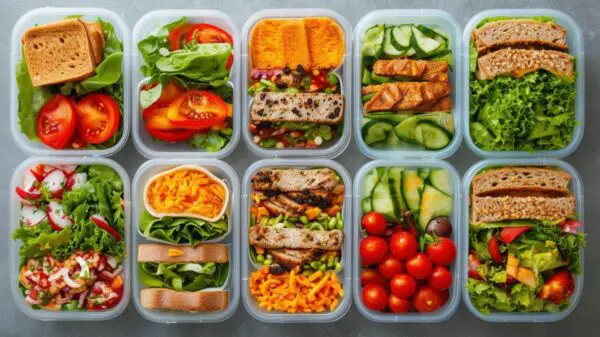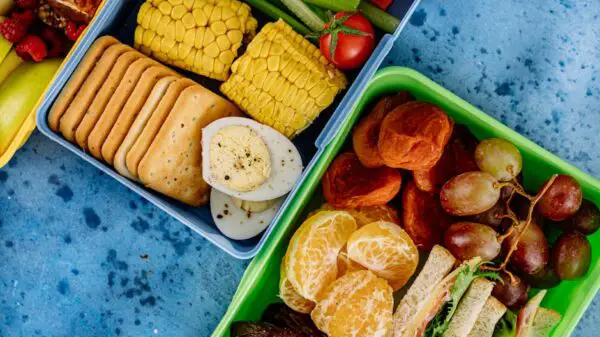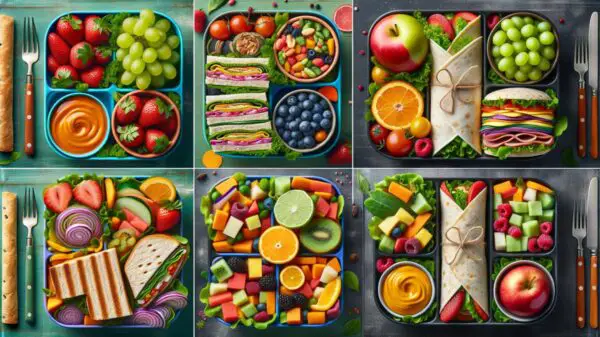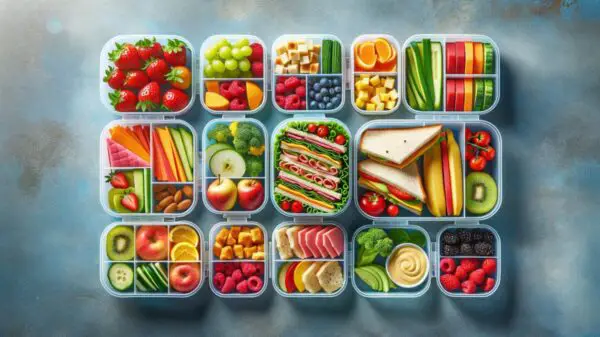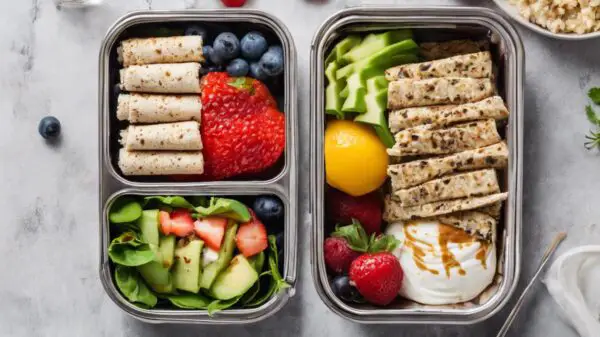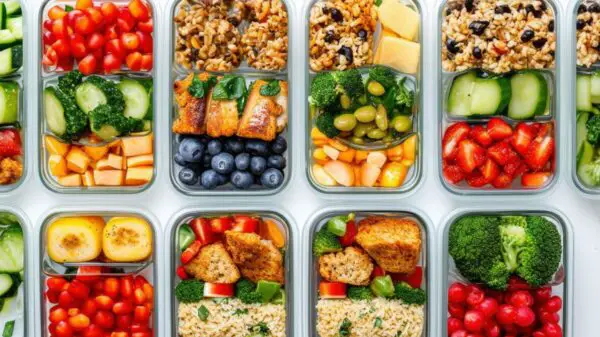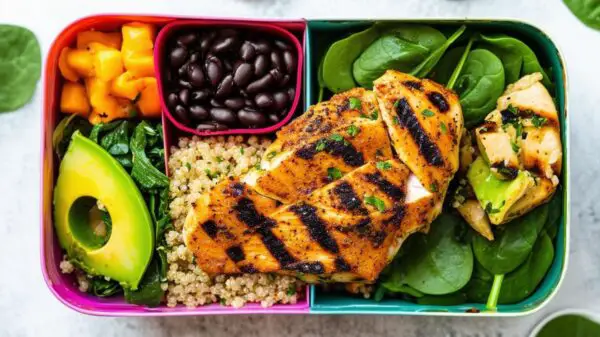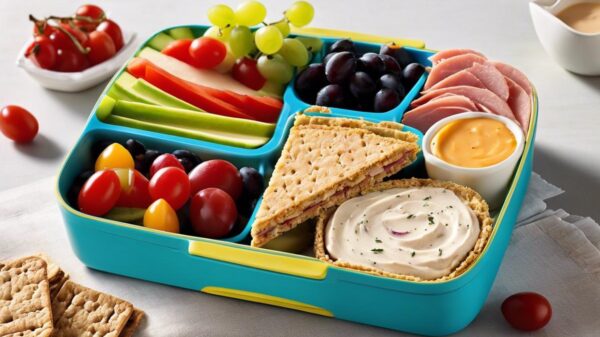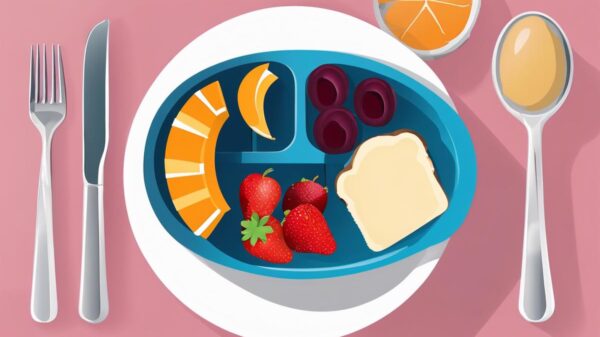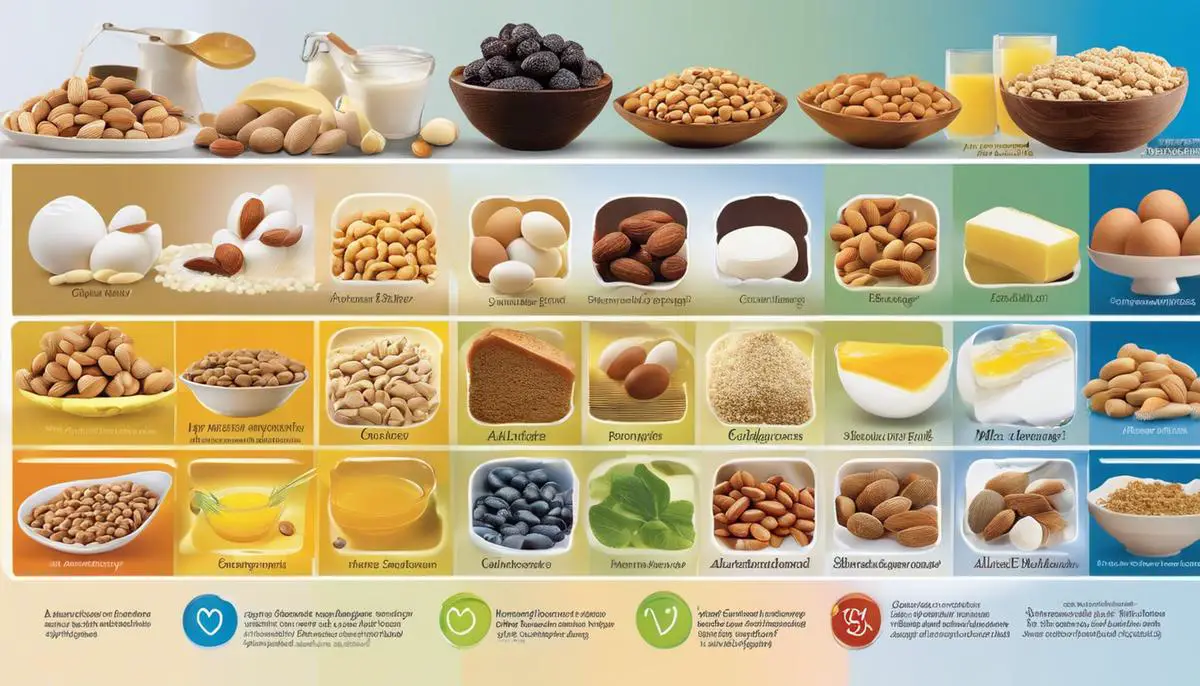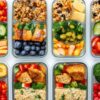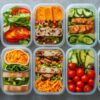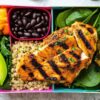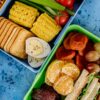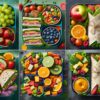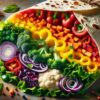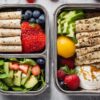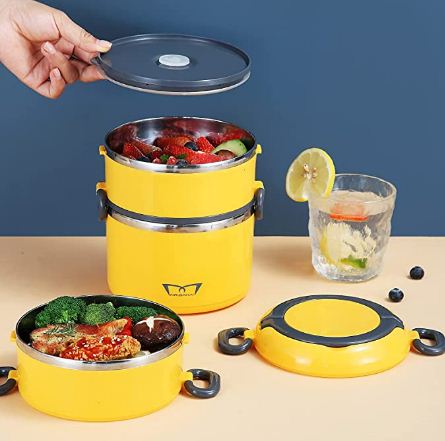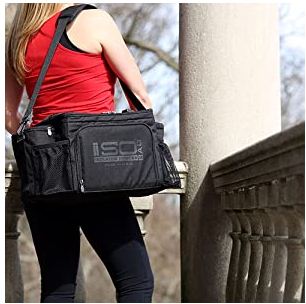Ensuring that every child has access to a safe and nutritious school lunch is a vital aspect of fostering a healthy learning environment. With the rise of food allergies among children, understanding the complexities of preparing allergen-free meals has never been more important. By identifying the eight most common allergens—milk, eggs, peanuts, tree nuts, soy, wheat, fish, and shellfish—we can take the first crucial step in safeguarding the health of sensitive individuals. While navigating food labels and recipes for potential allergens might seem daunting, it’s a skill that can be mastered and used to create inclusive meal options. Moreover, finding allergy-safe alternatives is not only about eliminating threats; it’s about replacing them with nutritious substitutes that contribute to a child’s wellbeing. This knowledge arms us with the power to create balanced meal plans that cater to the diverse needs of our schoolchildren, ensuring that every lunch box is both safe and supports optimal growth and learning.
Identify Common Allergens
Title: Packing Smart: Navigating Common Food Allergens for School Lunches
Hey there, fellow parents and caregivers!
Diving headfirst into packing school lunches can sometimes feel like you’re navigating a minefield—especially when it comes to food allergens. We want our kids to have wholesome meals, but we also want to make sure we’re being considerate of all the little ones in the classroom. After all, it’s all about fostering a safe and inclusive environment.
So, let’s break down those common culprits that we should be mindful of when prepping those lunchboxes:
-
Nuts, and we’re not just talking peanuts
Nuts are notorious for being one of the most common sources of food allergies. While peanuts often get the spotlight, tree nuts like almonds, cashews, and walnuts can be just as problematic. Substituting nut butters with sunflower seed butter or soy-based spreads can be a great alternative.
-
The Mighty Egg
Eggs pop up in more places than you might think, from salad dressings to some breads. Keep an eagle eye on labels and consider using an egg-free mayo or dressing. For baking, apple sauce or mashed banana can be a great binder instead of eggs.
-
Milk and its derivatives
Dairy products can often be an allergen concern. Remember to look beyond the usual suspects like milk, cheese, and yogurt – many snacks have milk proteins hidden within them. Calcium-fortified juices or plant-based milks can be a healthy swap for those needing to avoid dairy.
-
The Sneaky Soy
Soybeans show up in various forms in a lot of processed foods. When considering snacks or ingredients, opt for soy-free versions. Many stores now stock a variety of soy-free alternatives, so keep an eye out!
-
Wheat Woes
Going gluten-free isn’t just a dietary preference for some—it’s a necessity. Steering clear of wheat in school lunches means more than ditching standard bread. Be creative with gluten-free grains like quinoa or rice cakes for a crunchy alternative.
-
Fish and Shellfish
Less commonly found in school lunches but still important to watch out for. Fish and shellfish allergies can be tricky, so always read labels and steer clear of tuna sandwiches or seafood salads.
-
Sesame Sensitivities
This little seed packs a punch in flavor and potential allergens. Be sesame-savvy by skipping the tahini in hummus and looking for sesame-free bread options.
When packing a school lunch, thinking about food allergies shouldn’t dampen the fun. Instead, embrace it as a creative challenge and an opportunity to explore new foods and flavors that everyone can enjoy safely. Always read labels, get to know your little one’s classmates’ needs, and when in doubt, keep it simple with fresh fruits, vegetables, and allergen-free alternatives.
Together, we can ensure everyone gets to munch their lunch worry-free, and hey – you might just discover your family’s next favorite meal in the process. Happy packing!

Find Allergy-Safe Alternatives
Navigating Allergen Substitutes for a Happy, Healthy Home
Hey there, caring parents and homemakers! If your family deals with allergies, you know that keeping those pesky allergens at bay is kind of like a super-parenting power. You’re always scanning labels, asking questions, and making sure your pantry is stocked with safe foods that everyone can enjoy. Let’s dive into some savvy tips to find safe and healthy swaps for common allergens that haven’t been covered yet.
Legumes, Beyond Peanuts and Soy
While we’ve all heard so much about nut and soy allergies, other legumes can sometimes slip under the radar like lentils, peas, and chickpeas. If legumes are a no-go, consider grains like quinoa and buckwheat as hearty substitutes. These not only boost your dishes with protein but also add a delightful texture.
Sunflower Seeds – A Toast to New Spreads
Sunflower seed butter has become an increasingly popular substitute for peanut butter. It’s a fantastic spread on bread or an addition to smoothies, offering a similar consistency and protein punch without the worry. Just ensure it’s produced in a facility free from cross-contamination if that’s a concern.
Yeast Extravaganza
Often overlooked, yeast can be a bother for some sensitive tummies. Baking soda and apple cider vinegar can give that delightful rise to muffins and cakes, replacing yeast in recipes. For savory cravings, consider whipping up soda bread that relies on baking soda, true to its name!
Safe Spices – Flavor Without Fret
Spices are tricky since they’re usually considered safe, but some blends might contain allergens like mustard or garlic. When in doubt, it’s best to buy whole spices and grind them at home. Your nose will thank you for the fresh aroma, and your dishes will have flavor without the worry.
Chocolate Alternatives with a Twist
For those avoiding dairy or even chocolate itself, carob is a sweetheart of an option. Its naturally sweet, nutty flavor makes it a delightful addition to baked goods and sweet treats. Plus, carob is caffeine-free – perfect for a little bedtime snack!
Staying ahead of allergens doesn’t have to mean a bland diet or constant stress. With a sprinkle of creativity and a dash of vigilance, you can whip up a feast that’s both scrumptious and safe. Remember to always reach out to product manufacturers when in doubt, and build that supportive community with fellow allergy-aware families. Happy, healthy eating to you all!

Create Balanced Meal Plans
When packing allergen-free school lunches that are full of nutritional value, the key is to think outside the conventional lunch box and focus on variety, balance, and fun food presentation. Here are some top tips to ensure that children with food allergies don’t just have a safe meal but also a deliciously healthy one.
1. Fruits and Vegetables – Nature’s Allergy-Friendly Candy
Don’t underestimate the power of fresh fruits and veggies. They are naturally free of the common allergens and are full of essential vitamins and minerals. Include a rainbow of colors to provide a variety of nutrients – orange carrots for beta-carotene, red bell peppers for vitamin C, and dark leafy greens for iron and calcium. Try cutting them into fun shapes or serving them with an allergy-friendly dip to make them more appealing to kids.
2. Whole Grains – Beyond Wheat
Aside from the traditional wheat options, there are various other grains that can be great sources of energy and fiber. Quinoa, millet, and certified gluten-free oats are excellent for making granola bars, muffins, or as simple sides. Rice cakes and corn tortillas can also act as bread substitutes for sandwiches or wraps.
3. Lean Proteins – Keeping it Safe and Satisfying
Protein is essential for growth and development, and there are many options beyond nuts, eggs, and fish. Consider allergy-friendly alternatives such as turkey, chicken, or lean cuts of beef. For vegetarian options, look towards safe legumes (like chickpeas), seeds, and hypoallergenic protein powders that can be added to smoothies or baked goods.
4. Calcium-Fortified Plant Milks
Since dairy is off the table for some, calcium intake should come from other sources. Plant milks such as almond, rice, coconut, or oat (if not allergic) are often fortified with calcium and vitamin D – just make sure they are unsweetened to avoid added sugars. Use them in cereals, homemade pancakes, or simply as a refreshing beverage.
5. Healthy Fats – Fuel for the Brain
Healthy fats are crucial for brain health and can be included through seed butters like pumpkin or chia seed butter, which are nutritious and allergy-friendly. Avocado is another fantastic source of healthy fats and can be spread on sandwiches or wraps, made into guacamole, or added to salads.
6. Hydration – Don’t Forget the H2O
Water is the best option for staying hydrated. If a splash of flavor is desired, consider adding a slice of cucumber, a sprig of mint, or a squeeze of fresh lemon for some zest without adding allergens.
Remember, when building an allergen-free lunch box, reading labels is a must as allergens can hide in the least expected places. It’s also crucial to communicate with children about the importance of not sharing food at school to avoid exposure to allergens.
Most importantly, talk with a dietitian specialized in food allergies to ensure a balanced diet that meets all of the nutritional needs. With a little creativity and planning, allergen-free lunches can be both safe and scrumptiously satisfying. Bon Appétit!
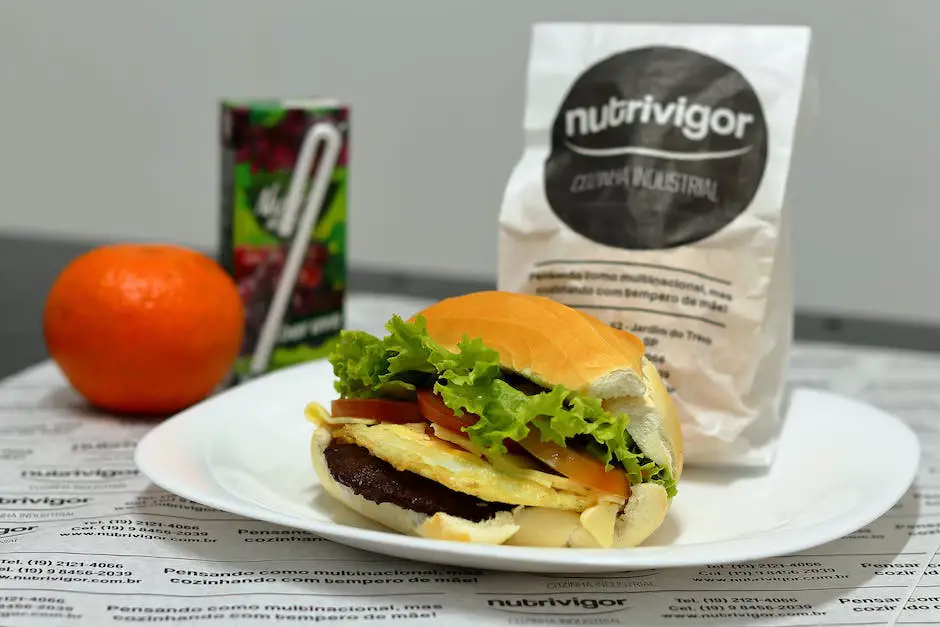
Embracing the challenge of preparing allergen-free school lunches can be a journey that leads to a better understanding of nutrition and wellbeing. By learning to identify common allergens and exploring allergy-safe alternatives, we create an inclusive and health-conscious atmosphere in our schools and communities. Through the thoughtful construction of balanced meal plans, the aim of providing safe, nutritious food becomes a reality that contributes not only to individual health but also to collective peace of mind. As children continue to flourish in allergen-aware environments, the efforts to accommodate their dietary needs serve as a testament to the community’s commitment to every child’s success, both within and outside the school walls.

